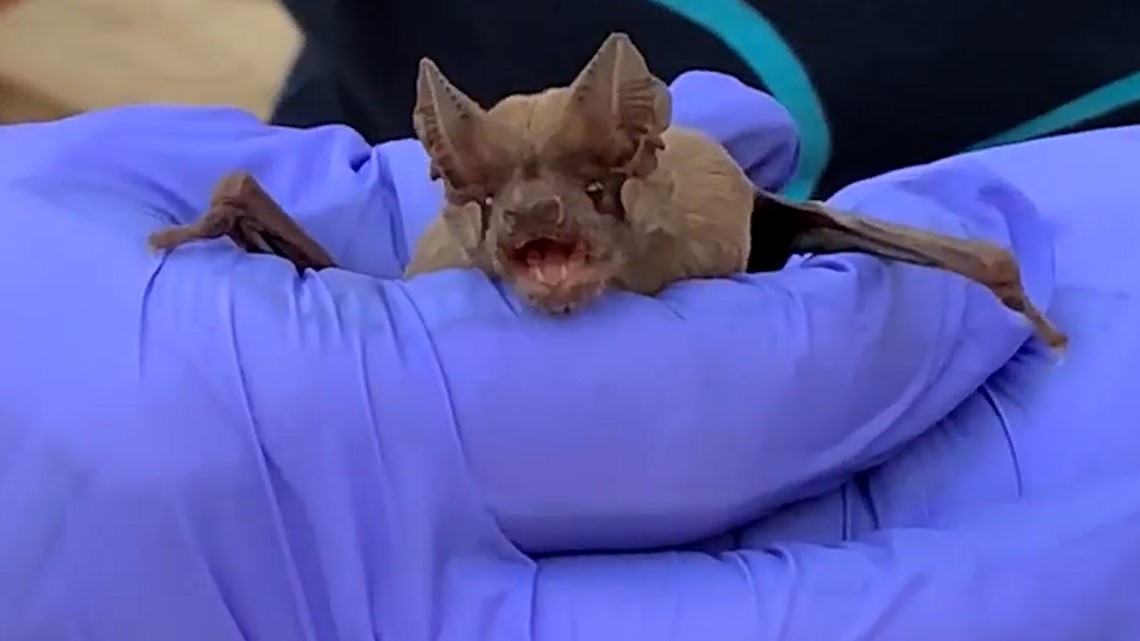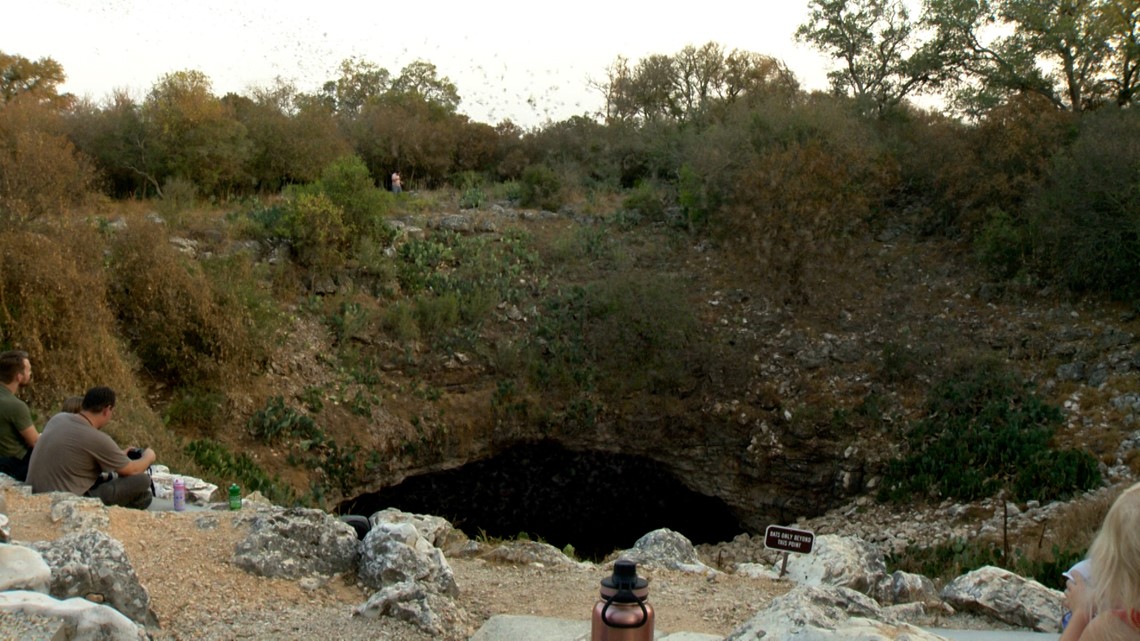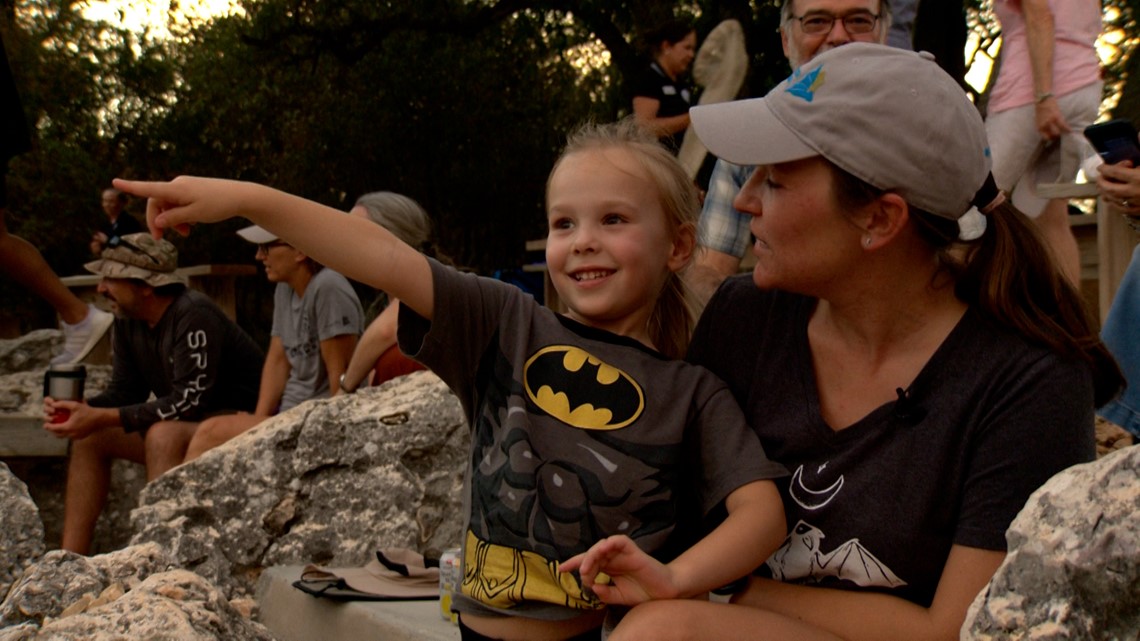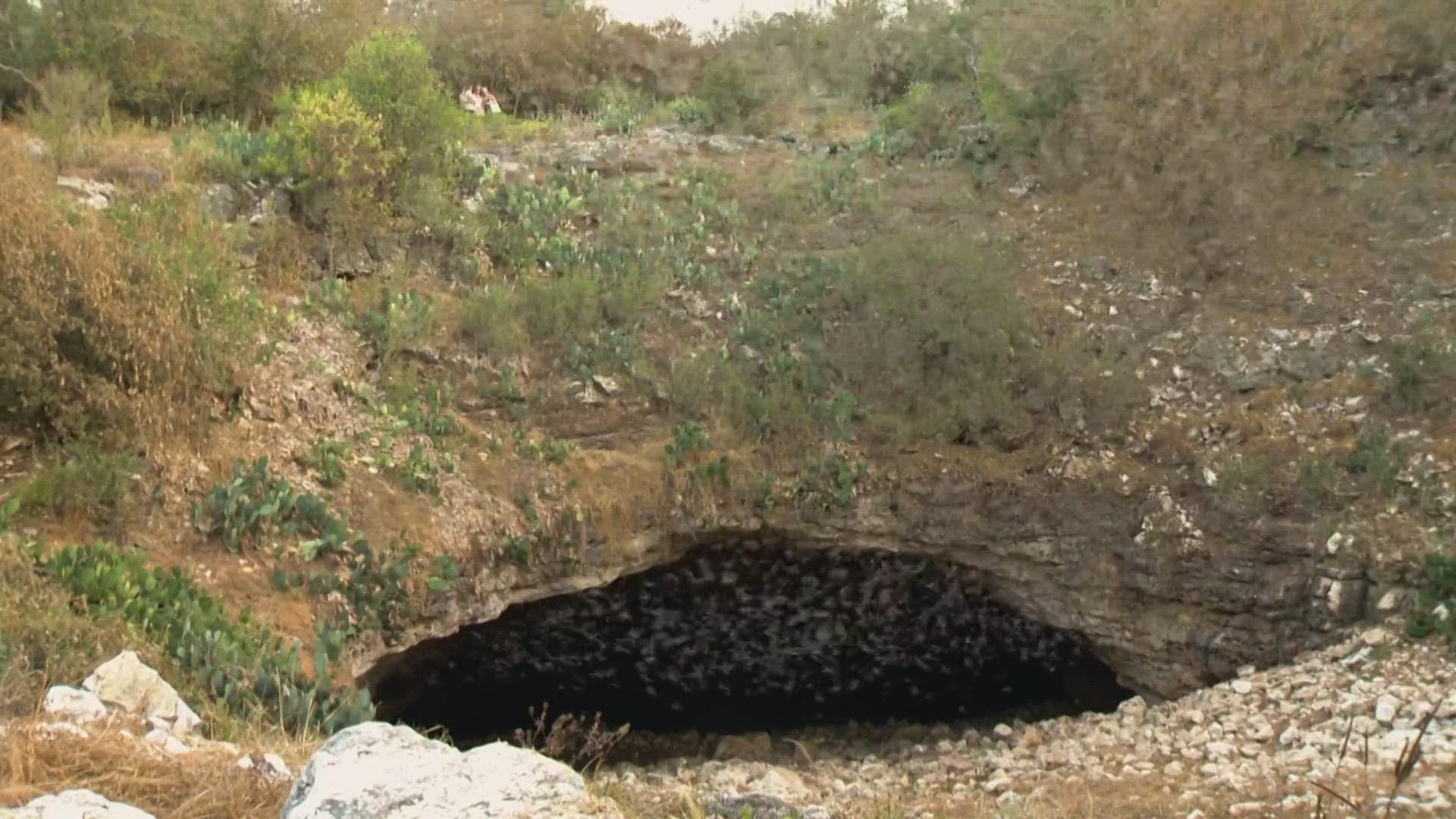BEXAR COUNTY, Texas — Very few have experienced it. Most don't know it exists.
About two miles down a dirt road, west of Natural Bridge Caverns, is the largest bat colony in the world: Bracken Bat Cave.
"There's about a million bats at Congress Avenue Bridge [in Austin]," said Mylea Bayless, Chief of Strategic Partnerships for Bat Conservation International (BCI). "So Congress Avenue Bridge like 20 times [bigger] is what you're about to see."
Between 15 and 20 million Mexican free-tailed bats have lived in the cave for an estimated 10,000 years.
The site sits on land 20 minutes northeast of downtown San Antonio, off Natural Bridge Caverns Road.
Millions of bats emerge from the cave every night, creating a phenomenon known as a batnado.
"This is a private facility, so not everyone has access to it. So we get to really see a really special event," said Lerrin Johnson, Public Information Officer of Texas Parks & Wildlife. "It's just a magical experience."
The bats spend their summers in Texas and migrate to Mexico in October for the winter. In March, they return and have their babies here.
"There are so many bats in this cave, they've been here so long, the bat guano in the cave is 75 feet deep," said Bayless.
"Bat guano means?" we asked her.
"Bat poop!"
Bracken Bat Cave is owned and operated by BCI. The cave is 650 feet deep and 100 feet wide.
At 7:30 each night, BCI members can sit and watch the bats emerge from just a few yards away.


"What we're about to see is mama bats and baby bats coming out of this cave in a bat tornado that will blow your mind," Bayless explained with a smile.
"Where are all the male bats?" we asked her.
"They're doing other things. They don't want to hang out with the ladies," she replied. "The male bats tend to form these bachelor colonies in other places. For example, when you see bats in parking garages or bridges."
KENS 5 watched the mothers and their pups take flight for their nightly meal. Each bat navigates using echolocation.
"When they're navigating their space in the dark, they're making sounds and then they're capturing the sound back in those big gorgeous ears and they can see their environment in complete darkness," Bayless explained. "They're going to go fly out over the corn and cotton fields and they are going to eat bugs all night long."
Bayless says 20% of the world's mammal species are bats. That's one in five.
Mexican Free-Tailed Bats have long and narrow wings, like a jet fighter. They're made for long, high, fast flying. Experts estimate flights to reach up to 70 miles an hour.


As the mothers and their pups emerge from the cave, they try to stay as low to the ground as possible. When it's still daylight, the bats are even more vulnerable to predators like hawks and owls.
Not only are these mammals an important component of our ecosystem, they also play a critical role in the agriculture industry. The bats eat moths that are damaging to our corn and cotton crops. Experts say the bats consume roughly 140 tons of bugs every night.
"You can see the bats coming out on the Doppler radar and doing this Star Wars thing where they intersect with the moth migrations. That's what they're eating," Bayless explained. "Your corn and your cotton are going to need fewer pesticides and be cheaper."
As the bats return to their maternity cave at dawn, the mothers are able to locate their pups by recognizing the sound of their voices.
Each bat lives an estimated 12 to 14 years, experts say.
For the Unger Family from Houston, this first visit to Bracken Bat Cave is a cherished educational experience.
"You hear the batnado type of thing, and it's true! It's hard to picture without being here," said Kate Unger, who brought her 4-year-old daughter, Alina to see the bats. "We've never been here before and it's just an awe-inspiring experience that I wanted her to be a part of."
As spectators watch the emergence, all remain quiet to avoid disturbing the bats. The sound that remains is the bats in flight, similar to the sound of a waterfall.
"If we had bat wings, we'd be going to eat moths tonight, too! But we had hamburgers," Kate said, making Alina laugh.
Alina dressed in a special outfit for the occasion: a Batman costume, cape included.


"Are these bats kind of like superheroes to you, too?" Kate asked Alina. "Yeah, they are."
Even though Bracken Bat Cave is a members-only property, the public still has a few opportunities to see the emergence for themselves. The next public viewing is Wednesday, September 6 from 6:30 p.m. to 9:30 p.m. Each ticket costs $90, with proceeds supporting BCI and the ongoing battle against the 1,500-acre open-pit mine and quarry planned just four miles north.
Experts say our treasured bat colony needs help.
"We can't wait. Wildlife everywhere is declining. 30% of our nation's birds are in decline. 40% of our amphibians are in trouble. 50% of the bats in North America need conservation attention. Every category of wildlife is in trouble," said Bayless.
The Recovering America's Wildlife Act, if passed by U.S. Congress, will provide $50 million to Texas to protect and preserve our wildlife.
"It provides dedicated funding that we can rely on, that our kids can rely on, that wildlife can rely on, so that we can make choices to protect animals like bats and their habitats in perpetuity so that our kids and our grandkids will be able to come here and watch the bat fly like this," said Bayles. "This is our nation's wildlife. This is Texas wildlife and it is just as important as every other thing that they're considering."
The bill would also enable organizations like BCI to fund conservation for landowners and farmers.
By next December, U.S. Congress should have a decision on the spending bill. How can the public help? Experts urge everyone to call their congressman.
"The white nose syndrome, which has been affecting bat populations all over the United States. We can fund more research and hopefully maybe eliminate that disease," Johnson added. "We don't want to see any more species become extinct. That is a worst case scenario."
Along with operating the largest bat colony in the world, BCI also protects Texas Hill Country habitats, and water supply for the City of San Antonio.
Members of the public have the exciting opportunity to witness the bat emergence from the Bracken Cave virtually. Click here to access the live camera inside the cave.

